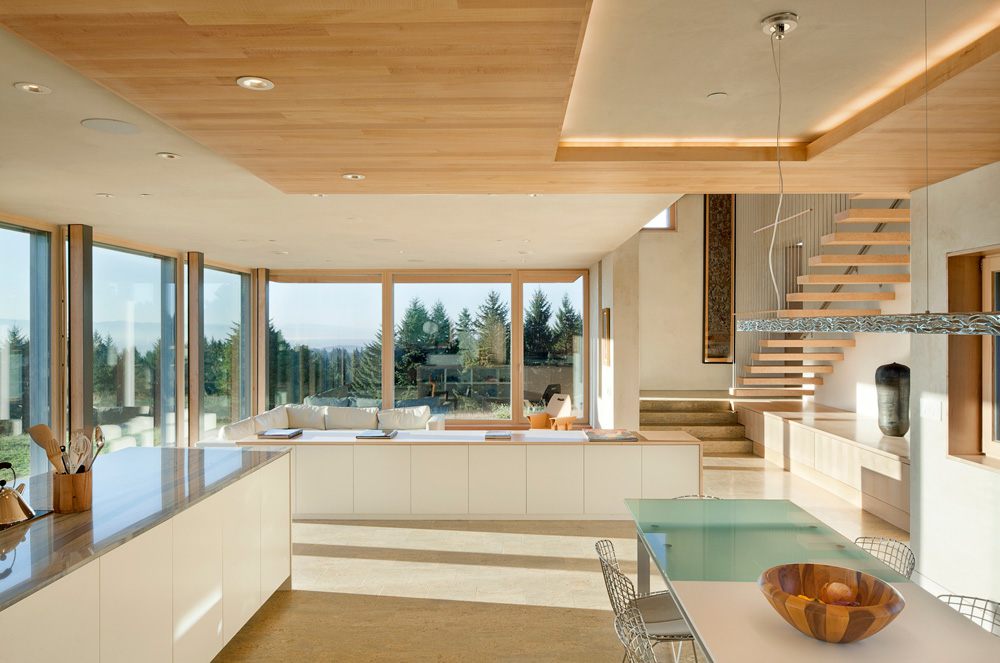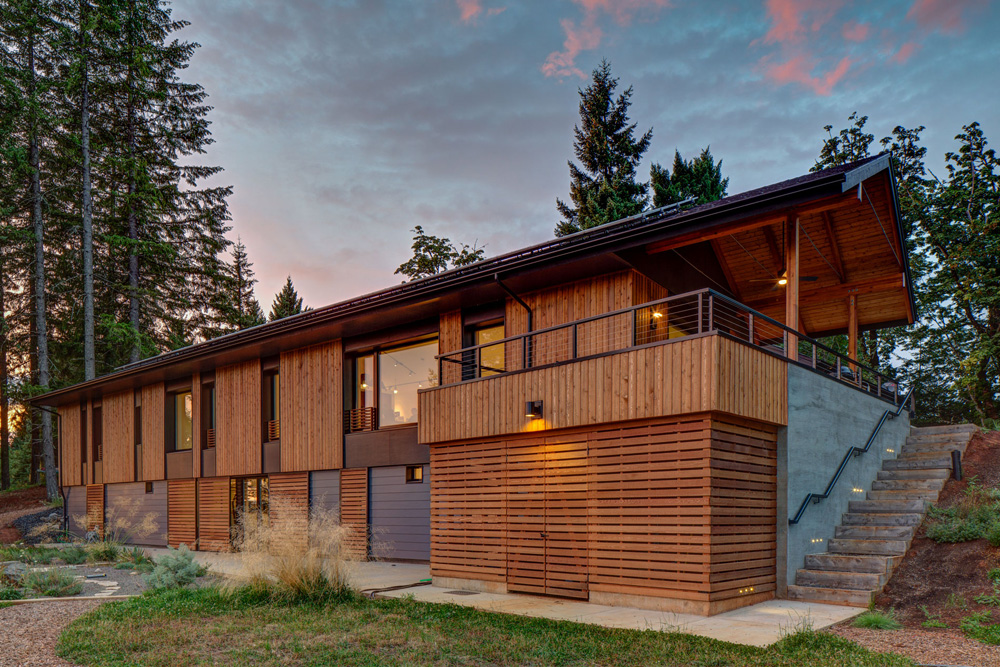I recently joined Eric Lemelson, owner of Karuna House, to present about his project at Earth Advantage’s PDX FutureGreen event at the Jupiter Hotel. It was a fun evening, showing off slides of a beautiful project to a happy crowd at the Jupiter’s outdoor “Dream Tent” on a warm, late summer’s night. Two hundred or so realtors, appraisers, lenders, and green building industry folks were gathered for a keynote by Jules Bailey (Multnomah County Commissioner) and a panel discussion by sustainability experts about the future of sustainable development and housing in Portland.
Whenever we at H&H speak about Karuna we start with its fusion of high design and high performance building (an accomplishment recently recognized by an AIA Portland 2030 Challenge design award bestowed to Holst Architecture.) We next celebrate that it’s the first building in the world to achieve the green building triple crown of Passive House, LEED, and Minergie certifications. We explain that Passive House’s laser-like focus on energy performance is complemented by LEED’s wide focus on broader sustainability goals. We point out that the Minergie-P-Eco certification earned by Karuna is a Swiss version of this same complement, with the “P” standing for a close parallel of Passive House and the “Eco” representing a broad set of sustainability targets.
But for the audience at PDX FutureGreen – a group focused on the marketability and feasibility of sustainable homes – I wanted to emphasize how Karuna House dispels myths.
The first is the myth that super-insulated, airtight, mechanically ventilated buildings cut off occupants from nature – that they somehow interfere with the inside/outside connection. In fact, the reverse is true. To understand why, we need to consider what makes up the “inside/outside connection” in buildings: inside access to views to the outside, natural light, and fresh air.

This photo of Karuna’s interior shows the flood of natural light coming into the space, as well as its sweeping views of the surrounding landscape. What the photo does not show is the quality of air inside; it feels like you’re outside breathing oxygen-rich fresh air (though filtered of allergens.) Thanks to the home’s toxic-free construction, the air is so pure that you notice subtle things like the fragrance of the natural wood trim inside. Of course, if you ever want a more immediate, direct portal to the outside you can always open a window – not a big deal. But when I’m at the house it never occurs to me to do so. I already feel connected to the outside. High performance buildings like Karuna have as strong an inside/outside connection as any buildings out there.

The second myth to dispel is that these “legacy buildings” – buildings that are part of the climate solution, that are so durable that they’ll last for generations, and that are so gracious to inhabit that people will care for them for generations – are limited to higher budget projects like Karuna. In reality, the building techniques and components that make Karuna House perform so well are not expensive. That’s why Reach CDC is able to build its Passive House affordable housing project at Orenco Station today. And it’s why we were able to deliver the Pumpkin Ridge Passive House, designed by Scott|Edwards Architecture, to a middle income family of four. The modest added expense of bringing the home to Passive House levels of efficiency, durability, comfort, and air quality will be offset by ongoing utility bill savings.
Our colleagues at Earth Advantage call it the Tesla Effect: with time, experience, and scale what starts as out-of-reach can become accessible to a broad market. The base version of Tesla’s popular Model S costs $70,000 today, but next year’s Model III will retail for just $35,000. So too with high performance building: while some prominent examples are pricey, high performance homes are in fact accessible to most of the market right now.
So let’s make high performance building the “new normal” today.
(Visit our High Performance Building page to learn more about H&H’s approach, including project examples, video, and articles.
Back to Field Notes